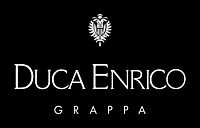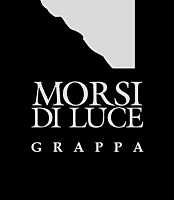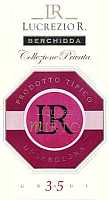
Wine Culture and Information since 2002 - Volume 22
 Wine Culture and Information since 2002 - Volume 22 |
|
RhubarbA singular plant: the stem is used in cooking and for the preparation of jams and pies, roots are used as a medicine and leaves are toxic |
|
Rhubarb, that is Rheum Officinale (common rhubarb), Rheum Palmatum L. (Chinese rhubarb) belonging to the family of polygonaceae, is a perennial plant with large leaves and small flowers, indigenous of China and of Tibet. The rhizome is used in medicine for its digestive and laxative properties, it is a plant very appreciated by liquor and candies industries. Rhubarb is a very ancient plant, it seems it was cultivated in Asia, more precisely in China, 2,700 years before Christ, where it was used for medical purposes. The first written historical information about the use of rhubarb, according to a therapeutic point of view, were written by Chinese emperor Shen Nung, who lived between 2,700 and 2,800 b.C., in his Pen Tsao Ching - the famous canon of medical herbs - in which are mentioned more than 300 plants, and in which are also described the medical properties of rhubarb.
Ancient Greeks and Romans made a large use of rhubarb, in particular for its officinal qualities. The name “rhubarb” has Greek origins, it is in fact made of the substantive “ra” - the plant - and the adjective “barbaron”, referred to the fact its was cultivated by barbarian people. Many people of the past wrote about rhubarb: Pedanio Dioscoride (Anazarba, first century AD), Greek physician from Cilicia, in modern Turkey, researcher of plant's medical properties; Pliny the Elder, author of the monumental “Naturalis Historia”, in which are discussed matters concerning botanics, medicine and officinal plants, Scribònio Largo, Roman physician, author of many medical studies, was one of the first Latin writers of medical subjects, and in his work “Compositiones Medicamentorum” he collected remedies for many diseases. Everyone knew, used and studied the properties of rhubarb although ignoring its botanic origin. Another important witness is found in the famous Marco Polo's book “The Million”, where he wrote «in the province of Tangue… and in all of its mountains can be found huge quantities rhubarb, and here it is bought by merchants who sell it all over the world…This witness is very important because, despite rhubarb was known and used as a medicine since the times of ancient Greeks and Romans, this confirms at those times its origin was unknown. Despite the many attempts done in identifying the plant, rhubarb was identified in one of the most important medical studies, when the Societé de l'Acclimatation of Paris which obtained, thanks to the French consulate in Tibet, some small plants, which were then cultivated in a greenhouse. Thanks to this, French botanist Baillon could carefully examine the plant and named it as Rheum Officinale. The name derives from the ancient Russian word Rha, that is, root.
|
||||||||
|
Rhubarb is a perennial herbaceous plant with an underground rhizome from which originate many and big roots. From the rhizome originate many clumps of leaves and stems, which can also reach the height of 2-3 meters (6.5-10 feet). The big reddish stems - rich of juice - have the same medical properties of the rhizome, but are mainly used in cooking and for the preparation of jams or candied fruits. The leaves originates from the base and flowers are grouped in a big panicle. The fruit is a brown hanging achene of trigone shape, having three sides. Rhubarb is an indigenous plant of Asia, more precisely of northern-western China, in the mountains near Kuku-nor lake. It is also cultivated in tempered areas of Europe where it requires a light soil, however the best quality rhubarb is undoubtedly the one coming from China. Rhubarb is a plant which does not require lots of care, however it does not stand to drought, therefore it is important to ensure plenty of water. Whoever wants to cultivate some rhubarb plants in his or her garden, should remember its cultivation is pretty simple, as the plant has a good adaptation to different climates and soil types. It is not advised to begin with seeding, as during the first two years, the growth is very slow and during this period stems cannot be harvested, it is then advised to buy small plants in a shop or use sprouts cut from another plant. In case it is wished to use sprouts, they must be planted in autumn, or at the beginning of springtime, in a fertile and humid soil. Rhubarb plants have a good adaptation to shadow, and in autumn it is good to help them with an appropriate fertilization. By following these simple rules, it will be possible to cultivate a perennial plant, which can be grown, in the same place, also for many years.
|
|
In cooking it is common adding some pieces of rhubarb's stems to strawberries during the preparation of jam, in order to exalt and balance taste, which would however be too sweet. The stalks of the leaves can be used for the preparation of jams, harvested in springtime while throwing away leaves which are rich in oxalic acid. In the East, during springtime, are being harvested the first young leaves which are consumed boiled. It should be remembered the edible parts of the plant are the stems; they must be pulpy and the leaves must be pulpy as well. The stem must have a brilliant green color or intense pink, whereas the border of the leaves must be carmine. Rhubarb leaves are not edible. Rhubarb is useful in the garden too. Burying some pieces of rhubarb in the area where are being cultivated cabbages or savoy cabbages, is a natural way to keep away a parasite, Plasmodiophora brassicae, responsible for an extremely dangerous disease for these plants. Rhubarb can also be used in cosmetics as a hair-dye. Allow some pieces of rhubarb to macerate for a week in white wine, filter and use it in wet hair. This dye gives hair copper nuances. In the East, the coloring properties of rhubarb are used for coloring fabrics in a natural way. According to a healthy point of view, rhubarb is used for preparing a tonic tisane for liver. Prepare an infusion with 100 grams of boiling water, 6 grams of dried and powdered rhubarb stems and roots, as well as 2 grams of sodium bicarbonate. Stir well and allow the infusion to cool down, filter and add cold water until having one liter of liquid. Two spoons before meals invigorate liver and are a good remedy for the lack of appetite. It is also used as a digestive because it stimulate the secretion of gastric juices and bile. The main therapeutic property of rhubarb is laxative, however it is a good remedy for hyperlipidaemia and hyperglycaemia. The laxative effect is obtained at high doses, that is with 1 or 2 grams, thanks to the presence of particular glucosides, which - when arrive in the colon - determine a reduced absorption of liquids, which then accumulate in the bowl creating a laxative effect. By taking from 0.05 grams to 0.2 grams, the laxative effect is reversed: at these doses prevail tannins and therefore the laxative effect becomes an astringent effect. The prolonged use of rhubarb as a laxative can cause constipation. Rhubarb is contraindicated during pregnancy and suckling, in case of inflammations of the digestive system, anyone suffering of constipation, hemorrhoids and anyone suffering of blood circulation problems. It is also contraindicated to children below 12. Despite its therapeutic properties, it is however good to be cautious in its use. It is in fact known the interaction of rhubarb with some medicines for the treatment of heart problems. It is therefore a plant to be used only after having asked a doctor. According to a nutritional point of view, rhubarb gives few calories, however it is very acid and it is then good to avoid any contact with aluminum, therefore it is good to avoid the contact with aluminum pans, spoons or foils.
|
||||
AquavitaeReview of Grappa, Distillates and Brandy |
|
|
| Distillates are rated according to DiWineTaste's evaluation method. Please see score legend in the "Wines of the Month" section. |

|
|
Grappa Duca Enrico |
|
| Duca di Salaparuta (Sicily, Italy) | |
| (Distiller: Distilleria Trapas) | |
| Raw matter: Pomace of Nero d'Avola | |
| Price: € 32.10 - 50cl | Score: |
| This grappa shows a pale straw yellow color, limpid and crystalline. The nose denotes intense and pleasing aromas of vanilla, licorice, plum and honey with perceptible alcohol pungency. In the mouth is round with intense flavors, perceptible alcohol pungency which tends to dissolve rapidly, balanced sweetness, intense flavors. The finish is persistent with flavors of licorice and honey. This grappa is distilled with discontinuous steam operated alembic still and ages in barrique. Alcohol 40%. | |

|
|
Grappa Morsi di Luce |
|
| Florio (Sicily, Italy) | |
| (Distiller: Distilleria Trapas) | |
| Raw matter: Pomace of Zibibbo | |
| Price: € 22.10 - 50cl | Score: |
| This grappa shows a pale greenish yellow color, limpid and crystalline. The nose reveals intense and pleasing aromas of raisin, honey, vanilla and hazelnut with perceptible alcohol pungency. In the mouth is round with intense flavors, perceptible alcohol pungency which tends to dissolve rapidly, balanced sweetness, intense flavors. The finish is persistent with flavors of raisin and honey. This grappa is distilled with discontinuous steam operated alembic still. Alcohol 40%. | |

|
|
Liquore di Mirto Collezione Privata |
|
| Lucrezio R. (Sardinia, Italy) | |
| Raw matter: Myrtle Berries | |
| Price: € 15.00 - 50cl | Score: |
| This liquor shows an intense brick red color, transparent. The nose denotes intense, clean, pleasing and refined aromas of myrtle with almost imperceptible alcohol pungency. In the mouth has intense flavors with perceptible alcohol pungency which tends to dissolve rapidly, balanced sweetness, intense flavor of myrtle. The finish is persistent with flavor of myrtle. Produced by the maceration of myrtle berries for 2 months. Alcohol 35% | |

|
|
Acquavite di Uve di Sardegna Selezione Speciale |
|
| Lucrezio R. (Sardini, Italy) | |
| Raw matter: Grapes from Sardinia | |
| Price: € 25.00 - 50cl | Score: |
| This distillate is colorless, limpid and crystalline. The nose reveals intense, clean, pleasing and refined aromas of fennel, apple, hazelnut, elder and medlar, with almost imperceptible alcohol pungency. In the mouth has good roundness and intense flavors, with perceptible alcohol pungency which tends to dissolve rapidly, balanced sweet hint, intense flavors, agreeable. The finish is persistent with flavors of fennel, apple and elder. This distillate is produced with a bainmarie alembic still. Alcohol 40%. | |
Wine Parade |
|
|
| The best 15 wines according to DiWineTaste's readers. To express your best three wines send us an E-mail or fill in the form available at our WEB site. |
| Rank | Wine, Producer | |
|---|---|---|
| 1 |
| Colli Orientali del Friuli Rosazzo Bianco Terre Alte 2002, Livio Felluga (Italy) |
| 2 |
| Riesling Central Otago 2004, Felton Road (New Zealand) |
| 3 |
| Brunello di Montalcino 1999, Castello Banfi (Italy) |
| 4 |
| Trento Talento Brut Riserva Methius 1998, Dorigati (Italy) |
| 5 |
| Amarone della Valpolicella Classico 2000, Zenato (Italy) |
| 6 |
| Wine Obsession 2001, Vignamaggio (Italy) |
| 7 |
| Amarone della Valpolicella Classico 1998, Santa Sofia (Italy) |
| 8 |
| Notarpanaro 1999, Taurino (Italy) |
| 9 |
| Chianti Classico Riserva Novecento 2000, Dievole (Italy) |
| 10 |
| Aglianico del Vulture La Firma 2002, Cantine del Notaio (Italy) |
| 11 |
| Nero al Tondo 2001, Ruffino (Italy) |
| 12 |
| Palazzo della Torre 2000, Allegrini (Italy) |
| 13 |
| Chianti Classico Riserva Novecento 2000, Dievole (Italy) |
| 14 |
| Don Antonio 2003, Morgante (Italy) |
| 15 |
| Montepulciano d'Abruzzo Riparosso 2001, Illuminati (Italy) |
|
||||||||
|
DiWineTaste Polls
|
| |||||||
Privacy Policy | |||||||


| Copyright © 2002-2024 Antonello Biancalana, DiWineTaste - All rights reserved |
| All rights reserved under international copyright conventions. No part of this publication and of this WEB site may be
reproduced or utilized in any form or by any means, electronic or mechanical, without permission in writing from DiWineTaste. |